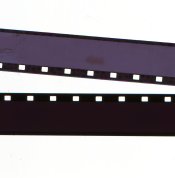SprintingInGerman
Member
- Joined
- Apr 17, 2011
- Messages
- 10
- Format
- Multi Format
Hey folks,
I've got 16 rolls of Polavision movie film, the camera, and the processor/projector, and I intend to use said Polavision stock to shoot part of a film I've been writing. Given that there's probably no chance I'll ever be able to get Polavision film again, I'm making an attempt to establish as foolproof and concise an approach as possible in order to get any image at all whatsoever. So I have a couple questions about the stuff.
Since there's a good chance the integral developer has dried up, and assuming that this is the case, is there ANY way to develop the film once its been shot? I.e., can I acquire or mix chemistry and then somehow run the film through it? Is there a way to "revitalize" the chemicals if they have dried out?
Any thoughts on the subject would be greatly appreciated.
Thanks,
-Max
I've got 16 rolls of Polavision movie film, the camera, and the processor/projector, and I intend to use said Polavision stock to shoot part of a film I've been writing. Given that there's probably no chance I'll ever be able to get Polavision film again, I'm making an attempt to establish as foolproof and concise an approach as possible in order to get any image at all whatsoever. So I have a couple questions about the stuff.
Since there's a good chance the integral developer has dried up, and assuming that this is the case, is there ANY way to develop the film once its been shot? I.e., can I acquire or mix chemistry and then somehow run the film through it? Is there a way to "revitalize" the chemicals if they have dried out?
Any thoughts on the subject would be greatly appreciated.
Thanks,
-Max














